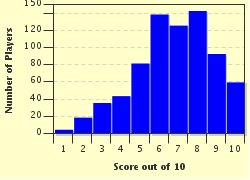Quiz Answer Key and Fun Facts
1. In 1860, Robert Bunsen and Gustav Kirchoff discovered Cesium through the recently developed method of spectroscopy, which can be used to identify elements by the colors they produce when heated. The scientists named the newly-found element after the Latin word 'caesius', which means what?
2. Cesium has an atomic number of 55, which places it on the left side of the periodic table. In what group of elements is cesium?
3. Cesium can absorb or emit a certain frequency of microwave radiation at a certain rate. This rate has been used by the International System of Units (SI) to define what often-used unit of time?
4. Small amounts of cesium can be found in a few metal ores. However, there is one ore that contains a significant amount of cesium. Its name may remind you of environmental dirtiness. What is it?
5. True or False: Cesium is considered dangerous mainly because most people are allergic to it.
6. The standard atomic weight of an element is given as the weighted average of the mass of all its isotopes (forms with different weight). This means more common isotopes have a greater effect on the standard atomic weight than rare isotopes. The standard atomic weight of cesium is 132.91. What is its only stable isotope, which is by far the most common?
7. Another isotope of cesium is cesium-137, which is radioactive, and was spread worldwide due to fallout from nuclear weapons tests in the 50s and 60s. It can be used in medicine to treat which of the following?
8. Contrary to a well-known slogan for M&Ms, which of these things does cesium do?
9. Cesium was named for the wavelength of light produced when viewed with a spectrometer. However, there are two different colors that cesium is claimed to be when viewed with the naked eye. One of them is a silvery white color. What is the other?
10. When being formed into a compound, cesium ionizes, which means it changes the number of electrons it has. In what way does cesium change the number of electrons it has?
Source: Author
romon1
This quiz was reviewed by FunTrivia editor
CellarDoor before going online.
Any errors found in FunTrivia content are routinely corrected through our feedback system.


